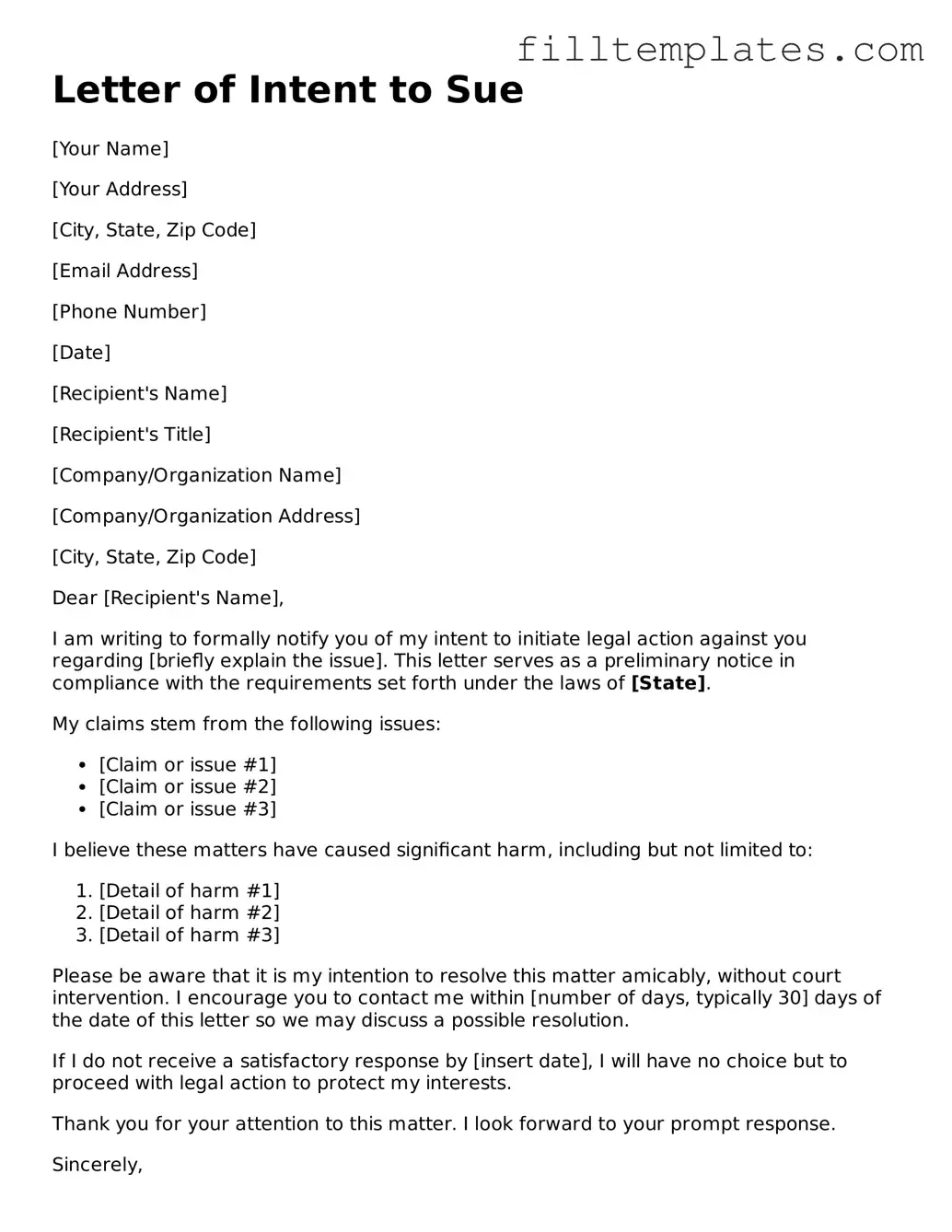Letter of Intent to Sue
[Your Name]
[Your Address]
[City, State, Zip Code]
[Email Address]
[Phone Number]
[Date]
[Recipient's Name]
[Recipient's Title]
[Company/Organization Name]
[Company/Organization Address]
[City, State, Zip Code]
Dear [Recipient's Name],
I am writing to formally notify you of my intent to initiate legal action against you regarding [briefly explain the issue]. This letter serves as a preliminary notice in compliance with the requirements set forth under the laws of [State].
My claims stem from the following issues:
- [Claim or issue #1]
- [Claim or issue #2]
- [Claim or issue #3]
I believe these matters have caused significant harm, including but not limited to:
- [Detail of harm #1]
- [Detail of harm #2]
- [Detail of harm #3]
Please be aware that it is my intention to resolve this matter amicably, without court intervention. I encourage you to contact me within [number of days, typically 30] days of the date of this letter so we may discuss a possible resolution.
If I do not receive a satisfactory response by [insert date], I will have no choice but to proceed with legal action to protect my interests.
Thank you for your attention to this matter. I look forward to your prompt response.
Sincerely,
[Your Signature (if sending a hard copy)]
[Your Printed Name]
